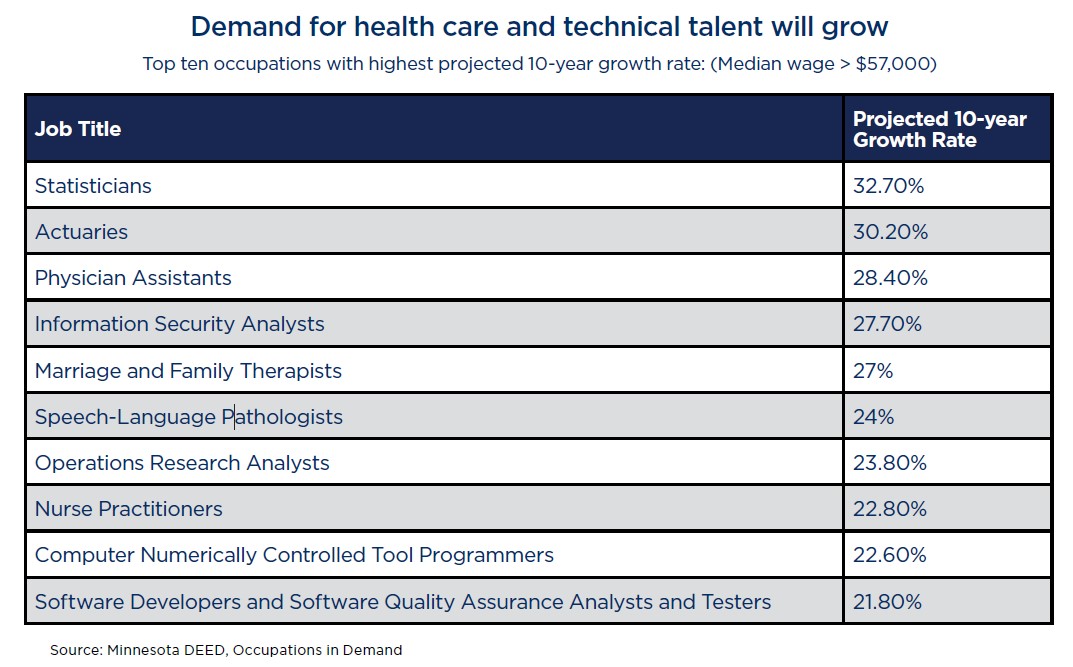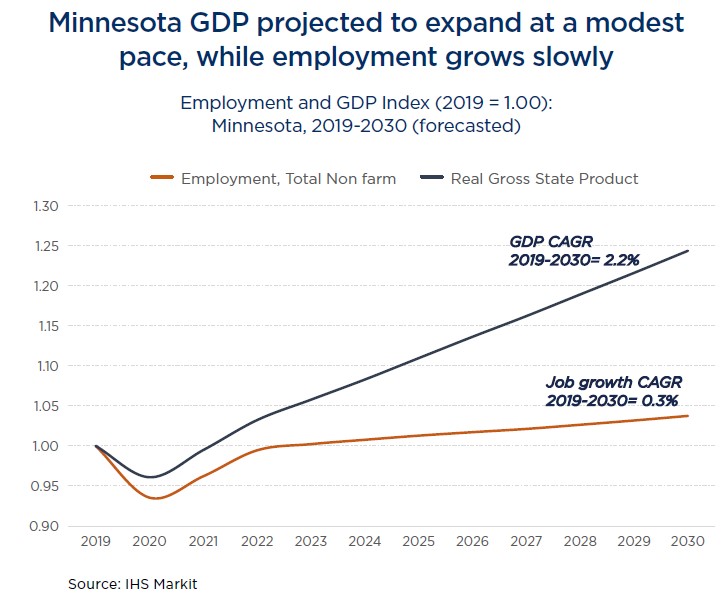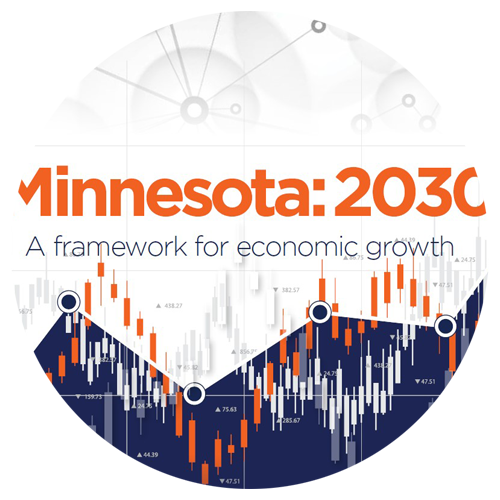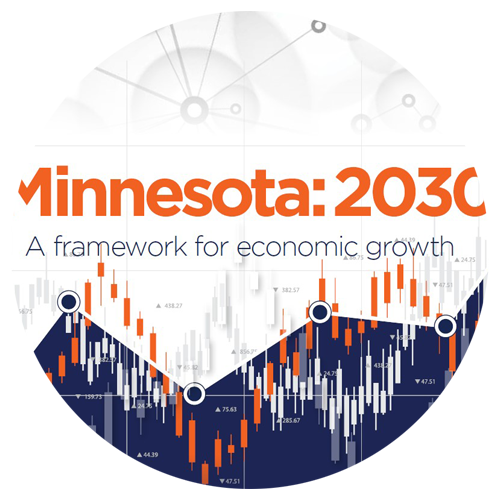10-year economic forecast
Minnesota: 2030
A framework for economic growth
The depth of job losses experienced in March and April of 2020 combined with continued uncertainty surrounding business restrictions and vaccination efforts means that Minnesota is likely to remain in recovery mode in 2021 and into 2022. Looking to the long term, IHS Markit forecasts that Minnesota’s economy will continue to expand at a modest rate, with GDP averaging 2.2% annual growth through 2030. Below are some key findings from the state’s 10-year economic forecast.
Minnesota is projected to exceed pre-pandemic GDP levels by 2022 and reach full employment by early 2023, though uncertainty remains. IHS Markit’s February 2021 forecast (most recent at publication) projects that Minnesota’s GDP will recover fully in 2022. Unemployment will fall to a low of 3.1 percent in 2022, before rising slightly.
Slow population and labor force growth – and falling labor force participation – will continue to constrain job growth this decade. Minnesota’s slow population and labor force growth is projected to continue, with Minnesota’s core working population, ages 15 to 64, growing just 0.1% annually through 2030. Labor force participation isn’t expected to return to 2019 levels this decade. This combination of macroeconomic factors is a hugely difficult challenge.
Productivity drives GDP growth, as employment growth slows. With job growth constrained, Minnesota will rely increasingly on productivity to drive economic growth. Innovation and human capital development will only be more important to a growing economy.
Most industries return to peak employment by 2022. Employment continues to shift toward technical, medical and service sectors. Six sectors are projected to reach pre-pandemic employment levels in 2021, with most industries returning to peak employment by 2022. Finance/insurance, retail and utilities all neared or exceeded pre-COVID levels by end of 2020, with several others remaining only 1-2 percent below peak.


The ten-year outlook also projects that employment will continue to shift toward professional and business services, health care and social assistance, and other service activities. Manufacturing projects to shed jobs even as sector output grows. Leisure and hospitality isn’t expected to reach full pre-pandemic employment levels through 2030, though this forecast is highly sensitive to changes in the pandemic outlook and should be viewed cautiously. Minnesota should consider what
this means for our workforce and begin developing strategies now to capitalize on future opportunities, while mitigating negative impacts.









